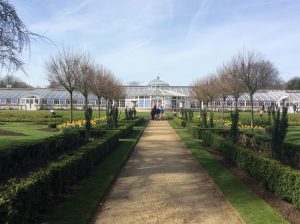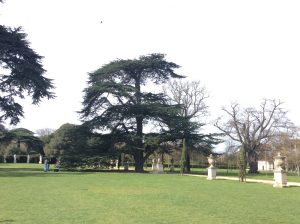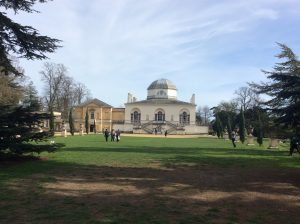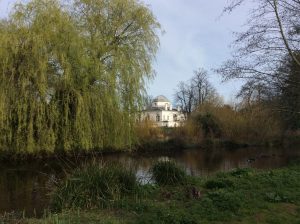Извините, этот техт доступен только в “Американский Английский”. For the sake of viewer convenience, the content is shown below in the alternative language. You may click the link to switch the active language.
In the beginning of 17th century the aristocratic Boyle family bought an estate in Chiswick with a large Jacobean house, as a summer retreat. It caught fire in 1725, and the head of the family, Richard Boyle, 3rd Earl of Burlington, decided to build a new ‘villa’ in the grounds.
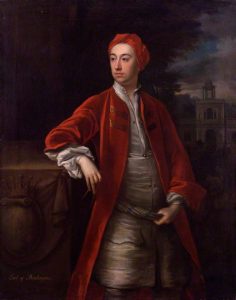
As the name suggests, it was not to be an ordinary English house. It was to be a Roman Villa — a masterpiece of classical architecture, coming to England all the way from Italy’s lost Roman buildings.
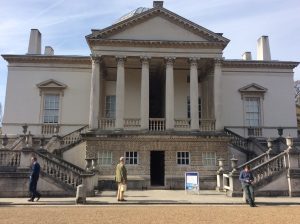
Richard inherited his title and riches at the age of 10, and, like many of his contemporaries, devoted himself to arts, going on Grand Tour of Europe in 1714 — 1719, and another one later on. The new villa was to house his collection of paintings and furniture, which he brought back from his travels. Lord Burlington regarded himself as an architect, and designed the house himself, based on his experiences in Italy and a substantial collection of books and drawings acquired there. Also in Italy he met his sidekick, a person who was to change the English garden design forever — William Kent.
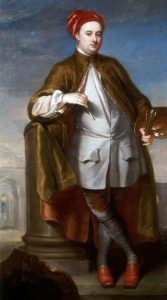
Kent studied in Rome in the beginning of the 18th century. Having met Lord Burlington on his travels there, he secured a commission to work on the design of the house and gardens at his estate in Chiswick.
Chiswick House is a fine example of the Palladian Style — Lord Burlington was inspired by the recently published English translation of The Four Books of Architecture by the 16th century Italian architect Andrea Palladio. In contrast to typical English Gothic style, this was all about classically proportioned geometric shapes and clear lines. The Dome, crowning Chiswick House, is a rare feature of domestic architecture, normally reserved for temples. The house is faced with Portland Stone, glowing brilliantly white in the sun.
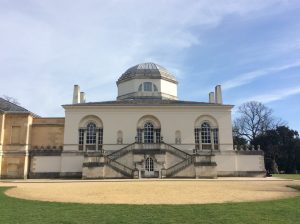
The house was built between 1726 and 1729. Innovative and beautiful as it was, it was the gardens that made history.
The formal Jacobean gardens of the Chiswick estate were replaced by the new ‘landscape’ style, as designed by William Kent. Being a painter and theatre set designer, Kent’s vision for the garden was derived from landscape paintings of the French artists Nicole Poussin and Claude Lorraine. It was all about the garden looking naturally beautiful, but every feature — either growing or man-made — carefully planned and in the right place, to achieve the most pleasing effect. The gardens included alleys shaded by trees, Ancient Greek statues, a lake and a cascade, as well as an obelisk and garden buildings, to evoke the appearance of Ancient Rome, combined with Lord Burlington’s Whig ideals.
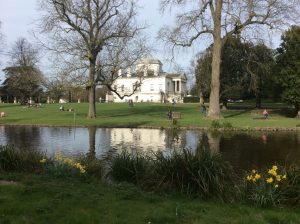
The Ionic Temple survives from Lord Burlington’s times. It takes inspiration from either Pantheon in Rome, or the Temple of Romulus.
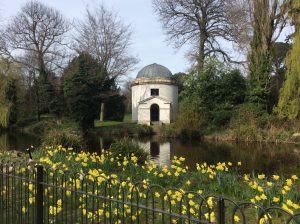
Both Lord Burlington and William Kent were keen on theatre, and theatrical design is reflected in a semi-circular hedge, known as the Exedra. The actors are the Roman statues. Kent’s originals were ‘identified’ by the writer Daniel Defoe as Ceasar (the one who invaded Britain), Pompey (responsible for the decline of the Roman Republic) and the philosopher Cicero. The Exedra also featured poets Horace, Homer and Virgil, and the philosopher Socrates. The current ones are reproductions — the originals are inside the house.
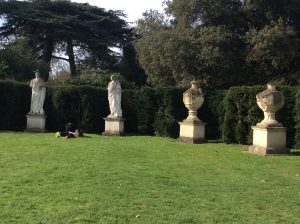
The lake was created in 1727 by widening an existing brook.
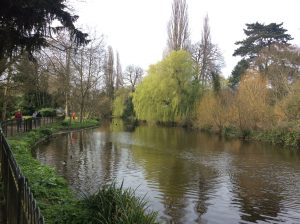
Kent’s Cascade — the two level waterfall — graces the end of it which is closest to the garden. The hill was made by piling the soil from the lake, and this created an elevated walkway above the cascade, affording views of the estate and the nearby River Thames. We climbed it, but could not see anything due to trees and hedges…..
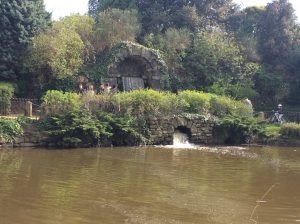
Lord Burlington died in 1753, the estate passed to his daughter Charlotte, who had married William Cavendish, 4th Duke of Devonshire. It was their son William, the 5th Duke, who make the next major mark on the estate. His claim to fame is his famous wife Georgiana,
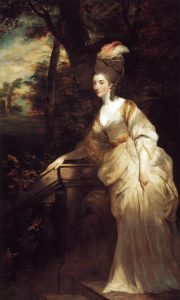
She loved Chiswick House and referred to it as her ‘earthly paradise’. The house was extended to provide accommodation for prominent members of the Whig party, aristocrats, writers and artists partying in the house and gardens. Georgiana commissioned architect James Wyatt to design the Classical Bridge in 1774. The family added new wings, so that they could entertain a multitude of important guests, who, over the subsequent years, included a couple of Russian Tsars, Queen Victoria and Print Albert, the musician Handel, the politician Charles James Fox.
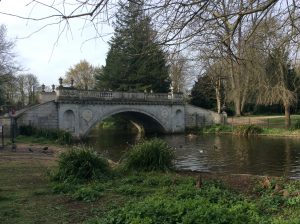
Georgiana’s son, the Bachelor Duke (he never married, despite being one of the richest and most eligible men in England at the time), bought an adjourning estate, and in 1813 a conservatory went up, with a walled garden at the back and an Italian garden in the front.
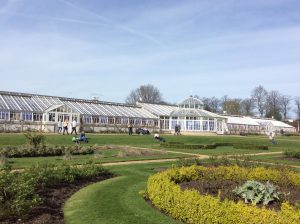
His menagerie included an elephant, elks, emus, kangaroos and an Indian bull.
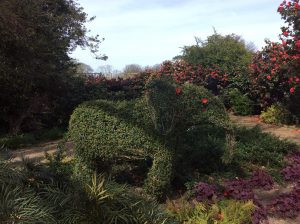
The conservatory housed England’s earliest collection of camellias.

After his death the family rented the estate to a number of tenants, who included the Prince of Wales in 1870s. Between 1892 and 1928 it became the Chiswick Asylum for wealthy patients. In 1929 Chiswick House was sold to Middlesex County Council, who raised funds by public subscription — among the subscribers was King George V. It became a view station during World War II and suffered bomb damage, resulting with a couple of wings having to be removed in the 1950s.
It is now managed by the Chiswick House and Gardens Trust, formed in 2005 by Hounslow Council and English Heritage, and is an excellent day out experience for the whole family.
